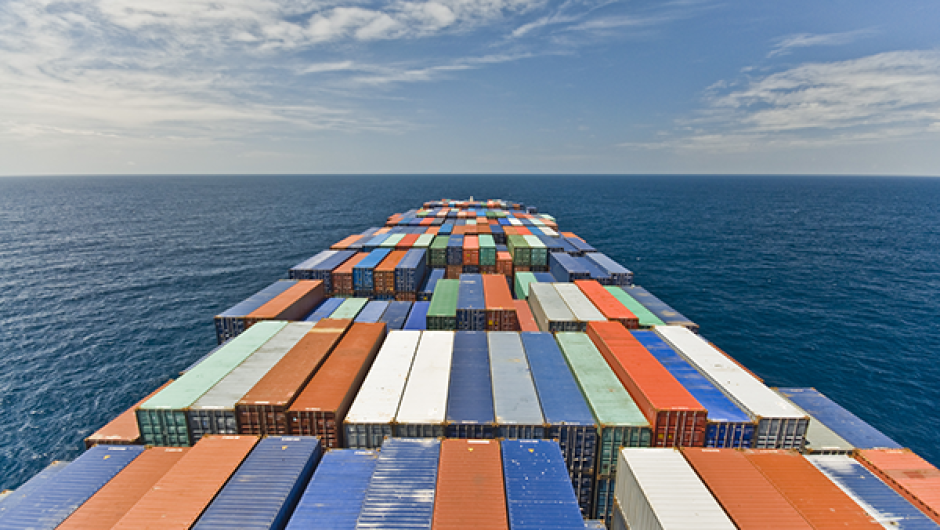Drivers for Zero Emission Vessels 2030

If shipping shall contribute to the Paris Agreement*, to keep the global mean temperature increase well below 2°C, Zero Emissions Vessels, ZEVs need to have entered service by 2030 and represent a significant proportion of new builds from there on. In a new report by Lloyds Register and University Maritime Advisory Services, UMAS, drivers for zero emission vessels are studied. However, none of the zero emission options studied by Lloyds and UMAS satisfy the ship-owners requirements completely which leaves regulatory intervention, such as high carbon price, necessary in the near future, the report states.
In their work, Lloyds and UMAS, has surveyed what ship-owners were looking for when it comes to zero emission vessels and found out that they wanted the ZEV-options to be viable at a moderate carbon price ($50/tonne CO2) and without too great increase to the capital cost of the ship, preferably not more than 10%. But the reliability and scalability of technologies are more important than the cost.
To test the ship-owner requirements, seven technology options in five different case study ship types in trans-oceanic voyage were examined. All analyses were performed against a reference ship, assumed to run on HFO with a two-stroke engine and a scrubber to comply with sulphur emissions regulations.
The seven technology options:
- Electric
- Hybrid hydrogen (hydrogen storage, batteries, fuelcell, electric motor)
- Hydrogen fuel cell
- Hydrogen + ICE (internal combustion engine)
- Ammonia fuels cell
- Ammonia + ICE
- Biofuel (assumed to have net zero emissions over a life cycle)
The study concludes that overall, biofuel is the most profitable zero emission solution followed by ammonia and hydrogen with internal combustion machinery. Hybrid and electric solutions are the least competitive due to large capital cost.
Pros and cons
Biofuels have low capital cost implications for machinery and storage and low fuel and voyage cost. However, advanced (e.g. non-food-derived), sustainability-certified biofuels will be required if production in the quantities needed as a full replacement shipping fuel is not to clash with other more basic societal objectives, such as the production of food for a growing population. It might cause prices to rise to the point where the biofuel options become uncompetitive.
When it comes to medium-long journeys (trans-oceanic) battery technology is not competitive and still requires significant further evolution in terms of performance and cost reduction. Batteries lower voyage cost can be significant for cruise and RoPax vessels.
Synthetic fuels such as hydrogen and ammonia with an internal combustion engine outperforms fuel cells and electric motors in the study. Hydrogen or ammonia used with fuel cells requires more onboard storage, which means increasing capital cost and reduced cargo space and revenue.
Of hydrogen and ammonia, it is the latter, in combination with the ICE, that appears the most competitive. This is because of the lower capital costs associated with the on-board storage of ammonia, relative to hydrogen. This is not consistent though, and hydrogen and ammonia are interchangeable as the most competitive energy sources, depending on the scenario and ship type.
Conlusions
In their conclusion Lloyds and UMAs also writes:
“Of the technologies considered, it is reasonable to anticipate that the costs of conventional components (e.g. the ICE, ammonia storage and biofuel storage) will not change significantly. However, the cost of fuel cells, batteries and hydrogen storage could all reduce significantly, especially if they become important components of another sector’s decarbonisation, or if action taken during shipping’s transition assists with the technology’s development.
But, ultimately, in terms of the shipowner requirements (no more than a 10% capital cost increase, competitiveness at a $50/tonne CO2 carbon price and negligible upstream emissions), none of the zero-emission options conceived, including advanced biofuels, completely satisfy the criteria.”
Regulatory intervention
In their press release Lloyds writes:
“Although none of the ZEVs are estimated to be more competitive than conventional shipping by 2030, the technology options are evolving rapidly and it’s possible that over the next 10 years the gap could reduce even further than this study estimates. If this gap does not close then there may be a need for regulatory intervention in the near future, to drive the viability compared to conventional fossil fuels.”
*The shipping sector is not a part of the Paris Agreement but in 2018 the International Maritime Organization, IMO, is set to adopt its Greenhouse Gas Roadmap at the MEPC 72 meeting.
Related content:
-
 Hon hade avtalad tid med Kapten ynkrygg
Hon hade avtalad tid med Kapten ynkrygg -
 Lighthouse omvärldsanalys 2025 – osäkerhet och tullar präglar sjöfarten
Lighthouse omvärldsanalys 2025 – osäkerhet och tullar präglar sjöfarten -
 Se seminariet Shipping in the Marine Environment
Se seminariet Shipping in the Marine Environment -
 Vad betyder egentligen de 90 procenten?
Vad betyder egentligen de 90 procenten? -
 Hålla där...
Hålla där... -
 Ny rapport: Klimatförändringarna ett hot mot de flesta större hamnar i världen
Ny rapport: Klimatförändringarna ett hot mot de flesta större hamnar i världen -
 Nytt AI-verktyg tar lasthanteringen till nästa nivå
Nytt AI-verktyg tar lasthanteringen till nästa nivå -
 Ammoniak tar kliv mot att bli ett framtida sjöfartsbränsle
Ammoniak tar kliv mot att bli ett framtida sjöfartsbränsle -
 Konkurrensen stor mellan containerhamnar
Konkurrensen stor mellan containerhamnar -
 Se Research & Innovation Meet
Se Research & Innovation Meet

